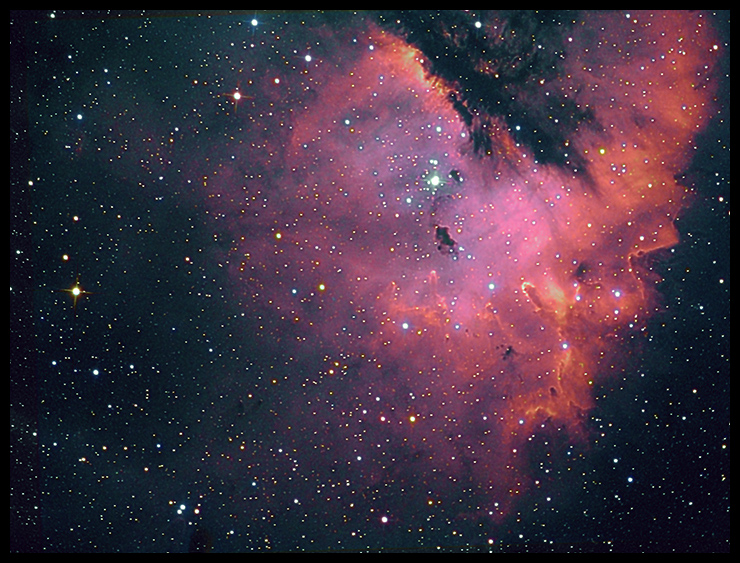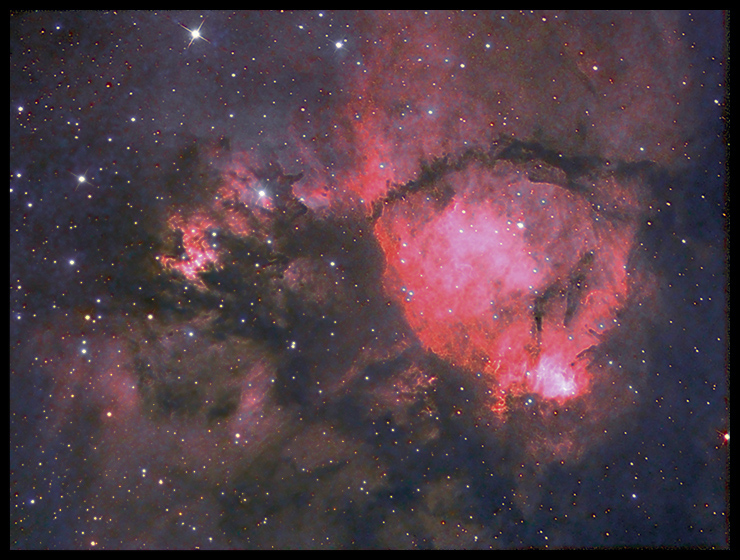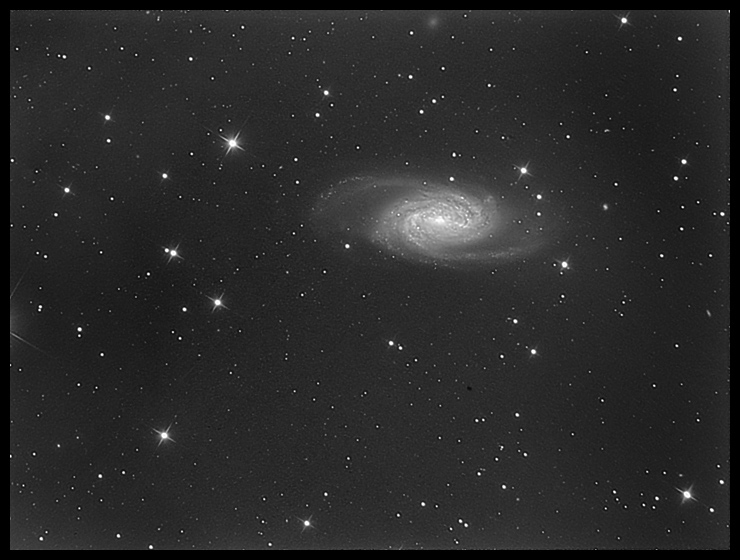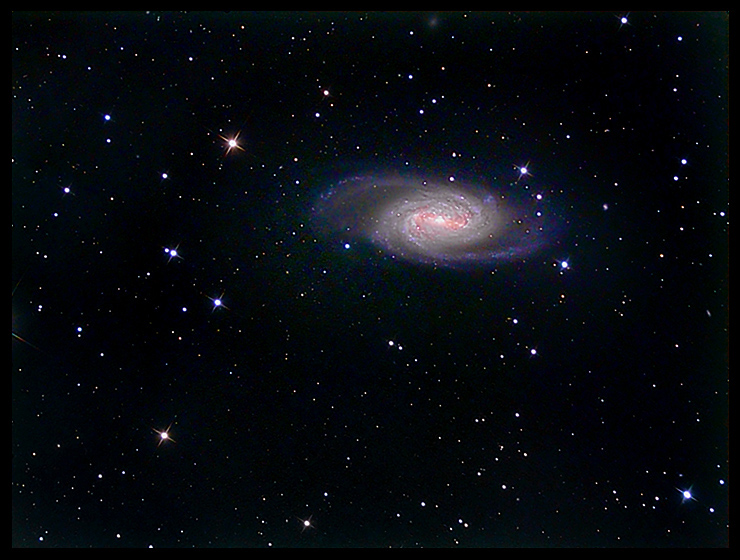01/04/2014. Who knew Cassiopeia was so full of intricate nebulae? Some people did. Those who've been shooting the Heart and Soul complexes with widefield hardware knew. But I didn't.
As promised, tonight I first returned to IC 1590 & NGC 281 and doubled the available hydrogen-alpha signal. Then I spent the bulk of this clear, cold (14°F) night on NGC 896, the brightest portion of the Heart Nebula, taking both color and narrowband data. And finally, because the night was so clear, I found a target of opportunity and had the telescope collect color and luminance data from NGC 2903, a galaxy on the western edge of Leo, nicely positioned over the 19th fairway (our narrow, accidental lawn), until dawn. In the morning, I took fresh darks with which to calibrate the 300s exposures of NGC 2903. The only trouble I encountered was that the CCD wanted to overshoot its cooling setpoint by 4-5 degrees Celsius and then take 10 minutes or so to return to the correct temperature.
Here's tonight's catch:

IC 1590 & NGC 281
8x1800s H-a (4 hours)
8 x 150s, RGB (1 hour total)

NGC 896 & part of IC 1805
7x1800s HA (3h 30mhours)

NGC 896 & part of IC 1805
7x1800s HA (4 hours)
8x150s RGB (1 hour total)

NGC 2903
33x300s (2h 45m)

NGC 2903
33x300s L (2h 45m)
5x300s RGB (1h 15m total)
Except where noted, deep-sky photos are made with an SBIG ST2000XM CCD behind a 10-inch Astro-Tech Ritchey-Chretien carried on an Astro-Physics Mach1GTO. The CCD is equipped with Baader LRGB and 7nm H-a filters. The internal guide chip of the CCD most often keeps the OTA pointed in the right direction (I'll let you know when a Meade DSI and a separate OAG or guidescope takes its place). Camera control and guiding are handled by Maxim DL 5.12. The stock focuser on the AT10RC has been augmented with Robofocus 3.0.9 using adapters turned on the lathe downstairs. Maxim performs image calibration, alignment, and stacking; Photoshop CS4 and FocusMagic 3.0.2 take it from there. Gradient Xterminator by Russell Croman and Astronomy Tools by Noel Carboni see their share of work, too. Beginning in May 2013, PixInsight has taken over some of the heavy lifting for transfer function modification and deconvolution.
:: top ::